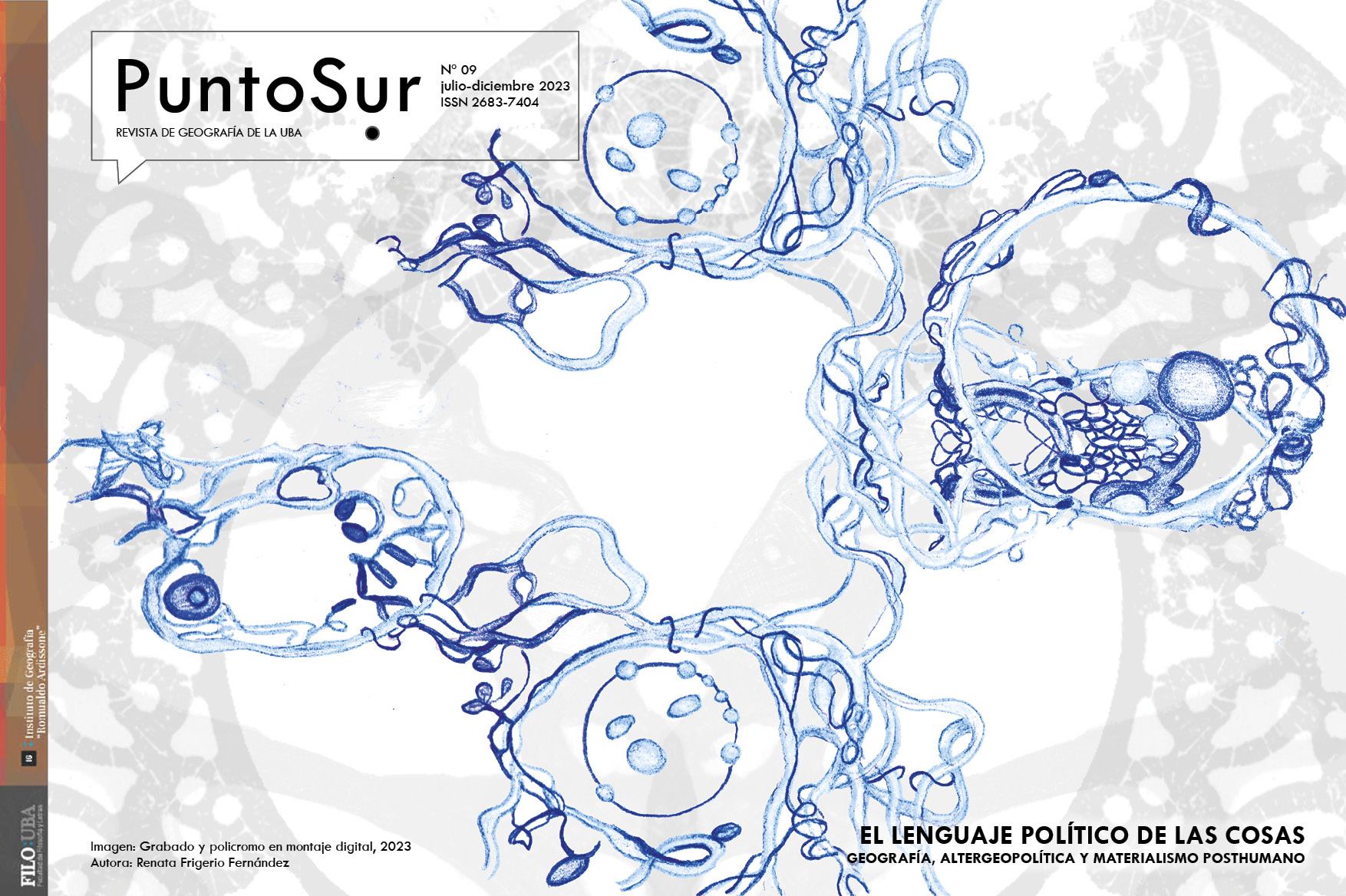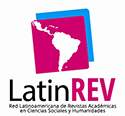La The question of nature in the thought of Donna Haraway. A reading from posthuman materialism
A reading from posthuman materialism
Abstract
Nature is, for Donna Haraway, both a topos (a place) and a trope (a literary figure). It is from this convergence of space and time (a narrative emerging from the configuration of the world that materialises as corporealities of multiple and messy trajectories) that Haraway engages in a meditation on the manifest desire for that ‘commonplace’ that nature points to, and attempts to reframe the ‘natural’ commonplace in terms that challenge patriarchy and capitalism. If capitalism can be understood as the project of an increasing abolition of space due to the acceleration of time, Haraway’s discussion of common spatiality is particularly suggestive. Indeed, contesting the sensibility of the classical tradition (which geometrises space and renders nature external), Haraway offers a repertoire of tools for thinking co-habitation in such terms as to account for both the always tensional relationality (from which what exists emerges) and the narratives that weave space and time, world and story. To address these ideas, firstly, we will delimit what we mean by posthuman materialism; secondly, we will mention the main implications of the kantian notion of nature; and thirdly, we will consider Haraway’s contributions to this discussion.Downloads
References
Adorno, T. W. (1963). Terminología Filosófica II (trad. R. Sánchez Ortiz de Urbina). Madrid: Taurus.
Adorno, T. W. (2008). Dialéctica negativa (trad. A. Brotons Muñoz). En Obra completa 6. Madrid: Akal.
Danowsky, D. y Viveiros de Castro, E. (2019). ¿Hay un mundo por venir? Ensayo sobre los medios y los fines (trad. R. Álvarez). Buenos Aires: Caja Negra.
Eagleton, T. (2006). La estética como ideología (trad. G. Cano y J. Cano Cuenca). Madrid: Trotta.
Ferrando, F. (2013). Posthumanism, Transhumanism, Antihumanism, Metahumanism, and New Materialisms. Differences and Relations. Existenz, 8(2), 26-32.
Gilbert, S.; Sapp, J. y Tauber, A. (2012). A Symbiotic View of Life: We Have Never Been Individuals. Quarterly Review of Biology, 87(4), 325-341.
Hadot, P. (2015). El velo de Isis. Ensayo sobre la historia de la idea de Naturaleza (trad. M. Cucurella Miquel). Barcelona: Alfa Decay.
Haraway, D. (1976) Crystals, Fabrics, and Fields: Metaphors of Organicism in 20th-century Developmental Biology. Yale University Press.
Haraway, D. (2014). Manifiesto para cyborgs. Ciencia, tecnología y feminismo socialista a finales del siglo XX (trad. S. Bras Harriott). Mar del Plata: Puente Aéreo.
Haraway, D. (2019a). Ciencia, cyborgs y mujeres. La reinvención de la naturaleza (trad. M. Talents). Barcelona: Ibérica.
Haraway, D. (2019b). Las promesas de los monstruos. Ensayos sobre Ciencia, Naturaleza y Otros inadaptables (trad. J. Fernández Gonzalo). Salamanca: Holobionte.
Haraway, D. (2019c). Seguir con el problema. Generar parentesco en el Chthuluceno (trad. H. Torres). Bilbao: Consomi.
Haraway, D. (2022). Visiones primates. Género, raza y naturaleza en la ciencia moderna (trad. N. Billi, G. Lucero y P. Fleisner), Buenos Aires: Hekht.
Haraway, D. y Tsing, A. (2019). Reflections on the Plantacionocene, a conversation moderated by G. Mitman. Edge Effects Magazine, June 8. Center for the Humanities. University of Wisconsin-Madison.
Kant, I. (1948). La filosofía como sistema (primera introducción a la KU) (trad. P. von Haselberg). Buenos Aires: Instituto de Filosofía de la Facultad de Filosofía y Letras de la Universidad de Buenos Aires.
Kant, I. (1991). Prolegómenos a toda metafísica del porvenir; Observaciones sobre lo bello y lo sublime; Crítica del juicio (trad, M. García Morente). México: Porrúa.
Kant, I. (1996). Crítica de la razón pura (trad. M. García Morente). México: Porrúa.
Kant, I. (1998). Fundamentación de la metafísica de las costumbres, Crítica de la razón práctica y La paz perpetua (trad. M. García Morente). México: Porrúa.
Kirk, G. S.; Raven, J. y Schofield, M. (2014). Los filósofos presocráticos. Historia crítica con selección de textos (trad. J. García Fernández). Madrid: Gredos.
Latour, B. (2017). Cara a cara con el planeta. Una nueva mirada sobre el cambio climático alejada de las posiciones apocalípticas (trad. A. Dillon). Buenos Aires: Siglo XXI.
Latour, B. (2021). Où suis-je? Leçons du confinement à l’usage des terrestres. París: La Découverte.
Nietzsche, F. (1994). El crepúsculo de los ídolos (trad. A. Sánchez Pascual). Madrid: Alianza.
Platón (1993). La república (trad. J. M. Pabón y M. Fernández-Galiano). Madrid: Alianza.
Sloterdijk, P. (2014). Esferas II (trad. I. Reguera). Madrid: Siruela.
Stengers, I. (2017). En tiempos de catástrofes. Cómo resistir a la barbarie que viene (trad. V. Goldstein). Buenos Aires: Futuro Anterior /NED ediciones.
Villacañas, J. L. (1990). Naturaleza y razón: Kant filósofo del clasicismo. En AA.VV., Estudios críticos sobre la “Crítica del Juicio”. Madrid: Visor.
Vita-More, N. (2020). The Transhumanist Manifesto. Documento de la organización Humanity+. https://www.humanityplus.org/the-transhumanist-manifesto
Whitehead, A. (2019). El concepto de naturaleza (trad. S. Puente). Buenos Aires: Cactus.
Copyright (c) 2023 Guadalupe Lucero, Noelia Billi, Paula Fleisner

This work is licensed under a Creative Commons Attribution 4.0 International License.






















